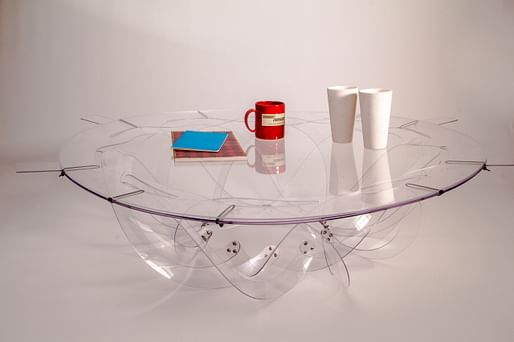

Researchers from the Harvard John A. Paulson School of Engineering and Applied Sciences (SEAS) and the Harvard Graduate School of Design (GSD) have developed a system that uses curved supports to transform flat objects into elaborate and customizable 3D structures.
Called Kiriform, the manufacturing method harnesses the mechanical instabilities in curved beams. The research team used a combination of experiments and numerical analyses to understand the geometry of curved, slender beams and what happens when those structural elements rotate and buckle. With just a simple rotational motion, buckling is used to create deployable structures.
Video: Harvard University
The system is created by layering flat sheets of elastic material on top of one another that interact to support each other when the 2D object is rotated into its 3D form. In addition to being lightweight and compact, Kiriform is fast to assemble and requires minimal hardware, making it cheap to manufacture and easy to deploy.
“Most buckling-induced deployable structures, like folding chairs, are activated by compressive forces that are created through the linear displacement of elements,” said Saurabh Mhatre, a research associate at GSD and first author of the paper. “Our approach is different in that the compression force is generated through a rotational movement, which in turn induces buckling as the trigger for the 2D-to-3D transformation.”
According to the researchers, Kiriform can be used to transform objects of a range of scales, from large-scale furniture to small medical devices. So far, the team has created two prototypes to demonstrate the system: one a lampshade that can be rotated to adjust levels of light and the other a coffee table that can fold flat and pop up in a single motion. These are just a couple of deployable objects that could be made by combining curved beams.
“This new platform can be extended to realize functional structures and devices from the millimeter to meter scale using a variety of different materials,” said Katia Bertoldi, the Professor of Applied Mechanics at SEAS and senior author of the study. “These structures could be used as medical devices, optical devices like camera focusing mechanisms, deployable wheels and turbines, furniture, or deployable shelters.”
The research was recently published in Advanced Materials, a weekly peer-reviewed scientific journal covering materials science. Along with Katia Bertoldi, it was co-authored by Elisa Boatti, David Melancon, Ahmad Zareei, Maxime Dupont, and Martin Bechthold.
No Comments
Block this user
Are you sure you want to block this user and hide all related comments throughout the site?
Archinect
This is your first comment on Archinect. Your comment will be visible once approved.